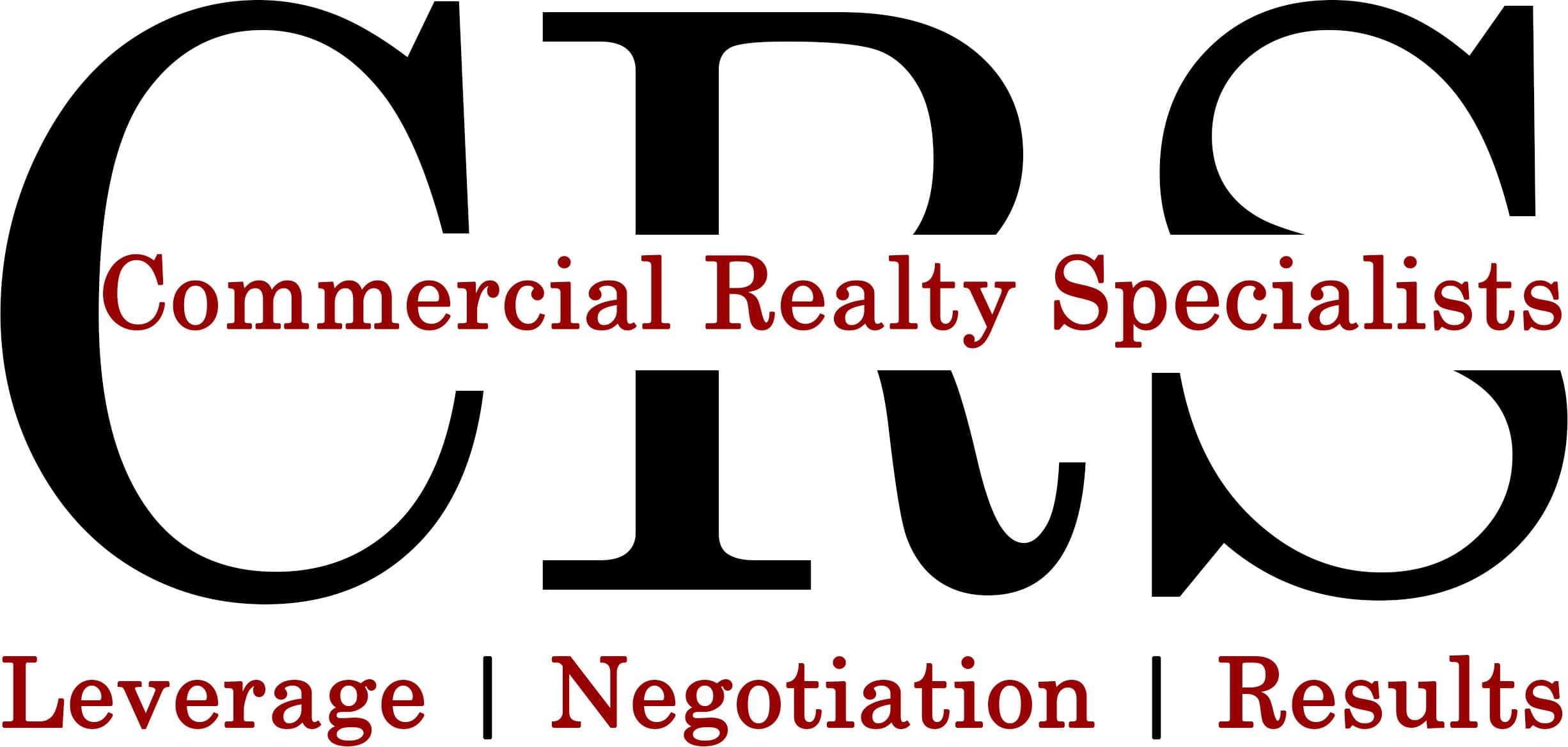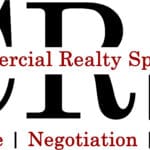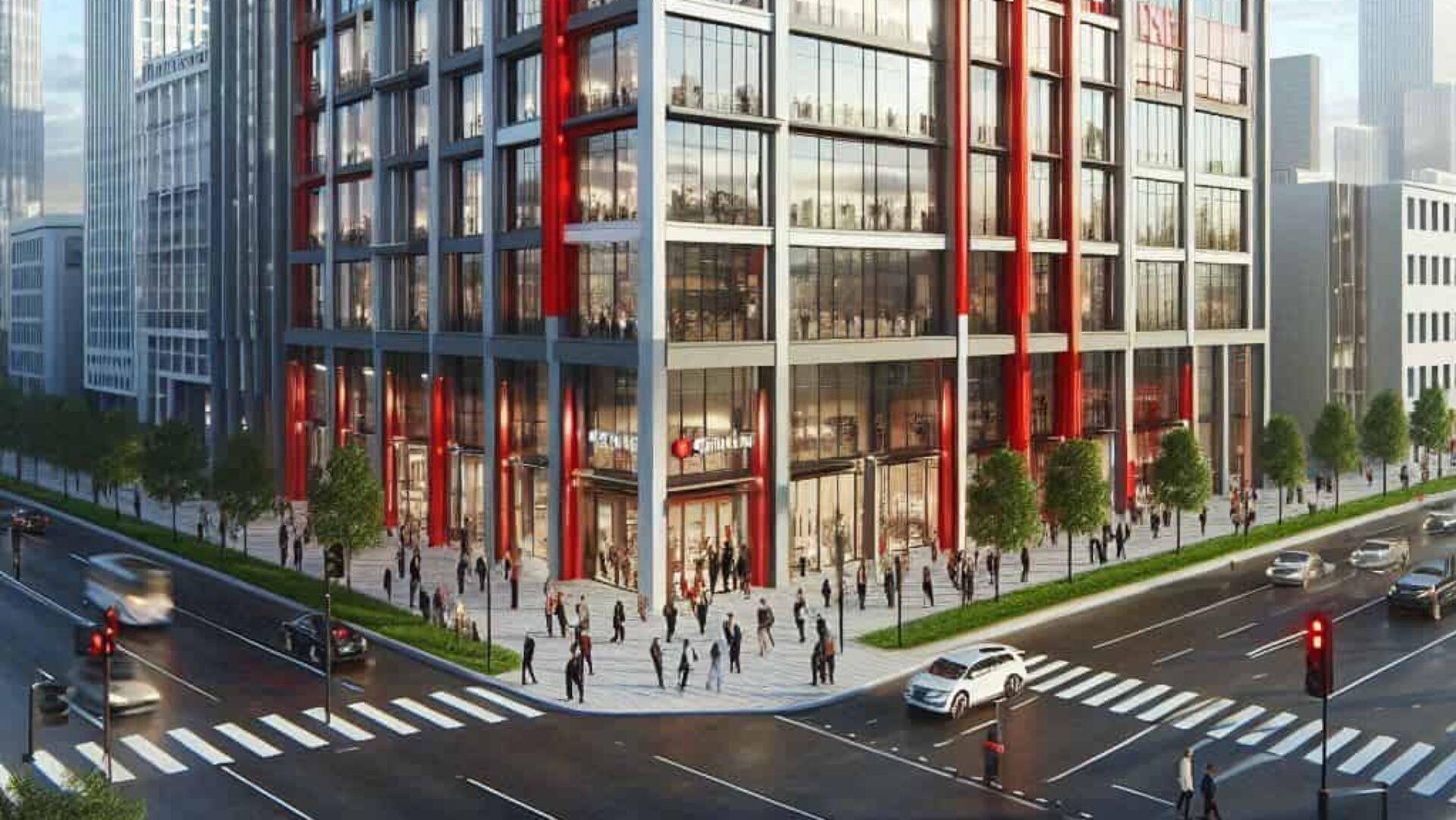
Commercial Realty Specialists Blog
Your Commercial Realty Specialists in Southern California
Leasing Fundamentals
Top 8 Mistakes Tenants Make When Signing a Lease
At CRS, we understand that signing a commercial lease is a significant commitment that can greatly impact a business’s success. However, with the right knowledge and a strategic approach to lease negotiations, tenants can navigate the process with confidence. Whether you’re a startup securing your first space or an established company renewing a lease, here are the top mistakes tenants make—and how to avoid them.
1. Failing to Negotiate Key Terms
Many tenants assume that lease terms are set in stone, but landlords expect negotiations. Failing to push for better terms can lead to unnecessary costs and inflexibility down the line. Rent, operating expenses, renewal options, and tenant improvement allowances are all negotiable. Without proper representation, tenants may agree to terms that favor the landlord without securing concessions that could benefit their business. To avoid this, always engage in a negotiation process. Don’t assume the initial terms are non-negotiable. At CRS, we can guide you in securing favorable terms on rent, expenses, and improvement allowances.
2. Overlooking Hidden Costs
Base rent is just one part of the financial picture. Many leases include additional expenses such as Common Area Maintenance (CAM) fees, property taxes, insurance, and utilities. Tenants who don’t fully understand these costs may find themselves paying much more than anticipated. Always request a breakdown of all expenses and clarify how they may change over time.
3. Ignoring the Lease Term and Exit Strategies
Signing a long-term lease without flexibility can be risky, especially for growing businesses. If your company needs to expand, downsize, or relocate, being locked into a rigid lease can be a significant burden. Tenants should negotiate early termination clauses, subleasing rights, or expansion options to accommodate future needs.
4. Not Reviewing Maintenance and Repair Responsibilities
Commercial leases often specify who is responsible for maintenance and repairs, but tenants sometimes assume landlords will handle everything. Some leases require tenants to cover unexpected repair costs or even replace HVAC systems. Understanding these obligations before signing is crucial to avoiding surprise expenses. Carefully examine the lease for maintenance obligations. If it’s unclear who is responsible for repairs, ask for clarification, and consider negotiating limits to tenant responsibilities or establishing a maintenance cap.
5. Not understanding personal liability and exclusivity clauses:
Understanding personal liability and exclusivity clauses are essential in the lease signing process. Many small business owners sign leases personally, making them liable for rent even if their business fails. This can have serious financial consequences. Whenever possible, tenants should negotiate a corporate lease or limit personal liability by including a “Good Guy Clause” or other protections. In retail leases, exclusivity clauses prevent landlords from leasing nearby spaces to direct competitors. Without one, a competing business could move into the same building or shopping center, impacting your customer base. Tenants should ensure they have exclusivity protections where relevant.
6. Skipping a Professional Lease Review
Leases are complex legal documents filled with clauses that can impact your business. Relying on verbal agreements or assuming the lease is standard can be a costly mistake. Always work with an experienced tenant representation broker, such as CRS, to review the lease and ensure it aligns with your business needs.
7. Failing to Plan for Growth
Businesses evolve, and your space needs may change sooner than expected. If a lease doesn’t allow for expansion, relocation, or lease assignments, you could find yourself stuck in a space that no longer fits your business. Negotiating flexibility upfront can prevent this problem.
8. Waiting Too Long to Start the Process
Finding the right space, negotiating lease terms, and finalizing agreements take time. Waiting until the last minute can leave tenants with limited options and less leverage in negotiations. Ideally, tenants should start planning 12-18 months before their lease expires to ensure they have enough time to explore the market and secure the best deal.
A commercial lease is one of the most critical agreements a business will sign. Avoiding these common mistakes can save money, provide flexibility, and ensure your lease supports your business goals. Partnering with CRS ensures you have expert guidance throughout this leasing process, helping you make informed decisions and lock in favorable terms that provide flexibility and value.
What challenges have you faced when signing a lease? Share your experiences in the comments! #CommercialRealEstate #TenantTips #LeaseNegotiation

Understanding Commercial Lease Types: Gross, Net, and Modified
Did you know that the type of lease you choose can significantly impact your business’ bottom line?
When we negotiate commercial leases at CRS, one of the most critical decisions our tenants face is choosing the right type of lease. The structure of the lease impacts not only the financial obligations but also the risk-sharing dynamics between the parties. We guide our clients through the negotiation of three main leases: gross leases, net leases, and modified gross leases. Understanding these lease types can help you make informed decisions tailored to your business needs and property goals!
First, a gross lease, sometimes referred to as a full-service lease, is a straightforward arrangement where our tenants pay a single, all-inclusive rent amount. This rent typically covers base rent, property taxes, insurance, maintenance, and utilities. The landlord assumes responsibility for managing and paying these expenses. With a gross lease, our tenants benefit from knowing their exact monthly rental expenses, making it easier to budget. If you’re a tenant willing to pay a higher base rent but want simplicity and predictable costs, a gross lease would be the best fit!
In a net lease, our tenants pay a lower base rent but assume responsibility for some or all of the property’s operating expenses. Net leases can be broken down into three main subtypes: single, double, and triple net lease. A single net lease involves our tenants paying base rent plus property taxes and the landlord covering operating expenses. For a double net lease, our tenant is responsible for property taxes and insurance, in addition to base rent. Lastly, for triple net lease, our tenant covers property taxes, insurance, and maintenance, along with base rent. Net leases are recommended to our tenants seeking lower base rents and willing to take on additional responsibilities. They’re common in industrial spaces, where tenants often prefer greater control over their portion of the property.
A modified gross lease combines elements of both gross and net leases. We negotiate modified gross leases for tenants that want to pay base rent plus specific costs like utilities, while the landlord covers other expenses, such as property taxes and maintenance. Modified gross leases are ideal for tenants and landlords seeking a middle ground. They’re often used in multi-tenant office buildings where cost-sharing arrangements can be customized. We can negotiate which expenses you’re willing to assume in order for your business needs to be met!
Understanding the differences between gross, net, and modified gross leases is essential for tenants in the commercial real estate market. Each lease type comes with its own set of advantages and challenges, and the right choice depends on individual needs, priorities, and risk tolerance. But don’t worry, we’re here to help!
At Commercial Realty Specialists, we are determined to help your business navigate these complexities to secure the best possible lease terms. Our expert team has years of experience securing tenant-friendly leases across industries. Whether you’re negotiating a new lease or reviewing an existing one, our team is here to provide expert guidance every step of the way.
How to Negotiate Tenant Improvement Allowances
Securing the right commercial space is a major step for any business, and negotiating tenant improvement allowances (TIAs) can make all the difference. TIAs are funds provided by landlords to help cover renovation costs, ensuring your space meets your needs. Successfully negotiating TIAs requires strategy, market knowledge, and the right representation. Here’s how to maximize your allowance, and how CRS is here to guide your business:
Market standards
Researching market standards is crucial before entering negotiations. TIAs vary based on location, property type, and lease terms. Understanding what landlords typically offer in your area will prevent you from settling for a lower allowance than you deserve. Market conditions fluctuate, and working with CRS ensures you have up-to-date insights on competitive allowances. Having this knowledge gives you leverage and confidence when making your case to the landlord.
Lease duration
The duration of your lease is a powerful negotiation tool. Landlords are more willing to invest in tenant improvements for longer leases since they secure stable occupancy. If you commit to a five- to ten-year lease, you can often negotiate a significantly higher TIA. However, it’s important to balance this with your business’s long-term needs—committing to an extended lease without flexibility could become a disadvantage if your space requirements change. Evaluate your future plans and use your lease term strategically to maximize benefits.
Cost of Improvements
A common mistake tenants make is underestimating the cost of improvements. Before finalizing a lease, obtain multiple bids from contractors for the build-out you need. This ensures that the TIA offered covers the actual costs and helps you negotiate more effectively. Presenting detailed cost estimates to the landlord demonstrates that your request is based on realistic figures rather than arbitrary numbers. This approach also helps identify whether landlords are offering an adequate allowance or if additional funding will be required.
Allowances
Not all tenant improvement allowances cover the same expenses. Some may include essential structural changes, HVAC upgrades, flooring, and lighting, while others exclude items such as furniture, signage, and IT infrastructure. Before signing the lease, clarify exactly what the allowance covers and how it will be disbursed. Understanding these details ensures there are no surprises later and allows you to budget accurately. Ensuring the lease agreement explicitly outlines these terms protects you from unexpected costs.
At Commercial Realty Specialists, we advocate for tenants, ensuring you get the most value from your lease. Whether opening a new location or renewing your lease, our team can help. Contact us today to discuss how we can secure a tenant improvement allowance that supports your business goals.
Key Clauses to Watch for in Commercial Leases
🚨 Don’t Sign That Lease Without Reading This First! 🚨
Hidden clauses in commercial leases can cost your business thousands—or even jeopardize your operations. With our help and understanding of the key clauses in these leases, tenants are ensured a fair and beneficial arrangement. These clauses often dictate the rights, responsibilities, and obligations of both parties – tenants and landlords – making it essential to scrutinize them carefully during the negotiation process.
One of the most critical clauses in any commercial lease is the rent clause. This section outlines the base rent, the payment schedule, and any potential increases during the lease term. Rent escalations can be tied to factors like inflation or market rates, and it is essential to understand how and when these adjustments will occur. Additionally, some leases include provisions for percentage rent, where the tenant pays a portion of their revenue as additional rent, a common practice in retail spaces. Tenants should be wary of such terms, but we can negotiate clarity on how revenues are calculated.
Operating expenses are another vital component to examine. Many commercial leases require tenants to pay a share of the building’s operating costs, including maintenance, utilities, and property taxes. This is commonly referred to as a “triple net” lease. We review these clauses for tenants to ensure transparency in how these expenses are calculated and allocated. Clear definitions and detailed breakdowns can prevent disputes and unexpected financial burdens.
We also leverage lease term and renewal options since they warrant close attention. The initial duration of the lease and the conditions under which it can be extended should be explicitly stated. Renewal clauses may include automatic extensions or require the tenant to give notice within a specific timeframe. Failure to meet these conditions can result in the loss of valuable rights, leaving tenants vulnerable to higher rents or loss of their space.
The permitted use clause dictates how the tenant can utilize the leased premises. This clause can be particularly restrictive in commercial leases, limiting activities that may not align with the landlord’s vision for the property or conflict with other tenants. We negotiate flexibility in this clause to accommodate potential changes in a tenants’ business model or operations.
An often-overlooked but essential clause is the exclusivity clause, which can be a valuable protection for tenants in certain industries. This clause prevents landlords from leasing adjacent spaces to competitors, safeguarding the tenant’s market position and ensuring customer exclusivity. We work together with tenants to carefully consider whether such a clause is necessary for their business and negotiate accordingly.
Finally, the indemnity clause is a critical component that dictates the liability of each party in case of damages or injuries on the premises. CRS pays close attention to the scope of our tenants’ liability and ensure that they are not unfairly burdened. Landlords typically require tenants to carry liability insurance, and the lease should clearly specify the required coverage levels and responsibilities.
But don’t worry, we can negotiate all of these clauses for you!
At CRS, we specialize in providing expert guidance on commercial leases. Our team has extensive experience in helping clients navigate the complexities of lease agreements, ensuring favorable terms that align with their business objectives. Whether you need assistance with lease review, negotiation, or understanding your rights and responsibilities, we are here to support you every step of the way. Let us help you secure a lease that works for you!
Market Trends and Insights
Commercial Real Estate Trends to Watch This Year
The commercial real estate market is evolving rapidly, influenced by technological innovations, shifting work patterns, and a growing emphasis on sustainability. As we navigate this dynamic landscape, staying informed about the latest trends is essential for investors, developers, and tenants alike. Here are some key trends Commercial Realty Specialists are looking out for this year:
Remote Work and Hybrid Office Models
The pandemic accelerated the adoption of remote work, and many businesses have now embraced hybrid models. This shift is redefining the demand for traditional office space. Companies are rethinking their physical footprints, leading to a surge in demand for flexible workspaces, coworking environments, and spaces that cater to a blend of in-office and remote work. As organizations look for more agile solutions, landlords are responding by designing spaces that can adapt to varied usage patterns.
Technology and Smart Building Integration
Technological advancements continue to shape the commercial real estate landscape. Smart buildings equipped with energy management systems, IoT sensors, and integrated security solutions are becoming increasingly attractive. These innovations not only improve operational efficiency and reduce costs but also enhance tenant satisfaction through better indoor environmental quality. Additionally, digital platforms and virtual tours are streamlining property marketing and leasing processes, allowing for faster decision-making and more efficient transactions.
Sustainability and Resilience
Environmental sustainability is no longer optional—it’s a key component of modern commercial real estate. Tenants and investors are increasingly prioritizing properties that incorporate green building practices and sustainable materials. Energy efficiency, reduced carbon footprints, and adherence to green certifications are driving demand for eco-friendly spaces. Moreover, with climate change presenting new challenges, resilience in design is vital. Buildings are being constructed or retrofitted to withstand extreme weather, ensuring long-term viability and lower risk for stakeholders.
Industrial and Logistics Expansion
The rise of e-commerce has fueled a robust demand for industrial and logistics spaces. Warehousing, distribution centers, and last-mile delivery hubs have become critical components of the commercial real estate portfolio. Proximity to major transportation routes and urban centers is highly valued, as businesses seek to meet the increasing consumer demand for rapid delivery. This trend is likely to persist, reshaping urban and suburban landscapes as industrial facilities continue to expand.
Urban Redevelopment and Mixed-Use Spaces
Urban areas are experiencing a renaissance as cities invest in mixed-use developments that combine residential, office, retail, and recreational spaces. This approach not only revitalizes downtown areas but also meets the growing demand for walkable, vibrant communities. Mixed-use projects provide diverse revenue streams and create dynamic environments where people can live, work, and play. For developers, this trend offers an opportunity to innovate and reimagine traditional urban spaces to better align with contemporary lifestyles.
Looking Ahead
These trends emphasize the growing importance of flexibility, innovation, and sustainability in today’s commercial real estate market. Whether you’re planning a new investment, considering a lease, or embarking on a redevelopment project, keeping these trends in mind will help you make informed decisions and stay ahead of the curve. Embracing change and adapting to emerging market demands is key to long-term success in the evolving world of commercial real estate.
Stay tuned for more insights and updates on the trends that are shaping our industry this year!


